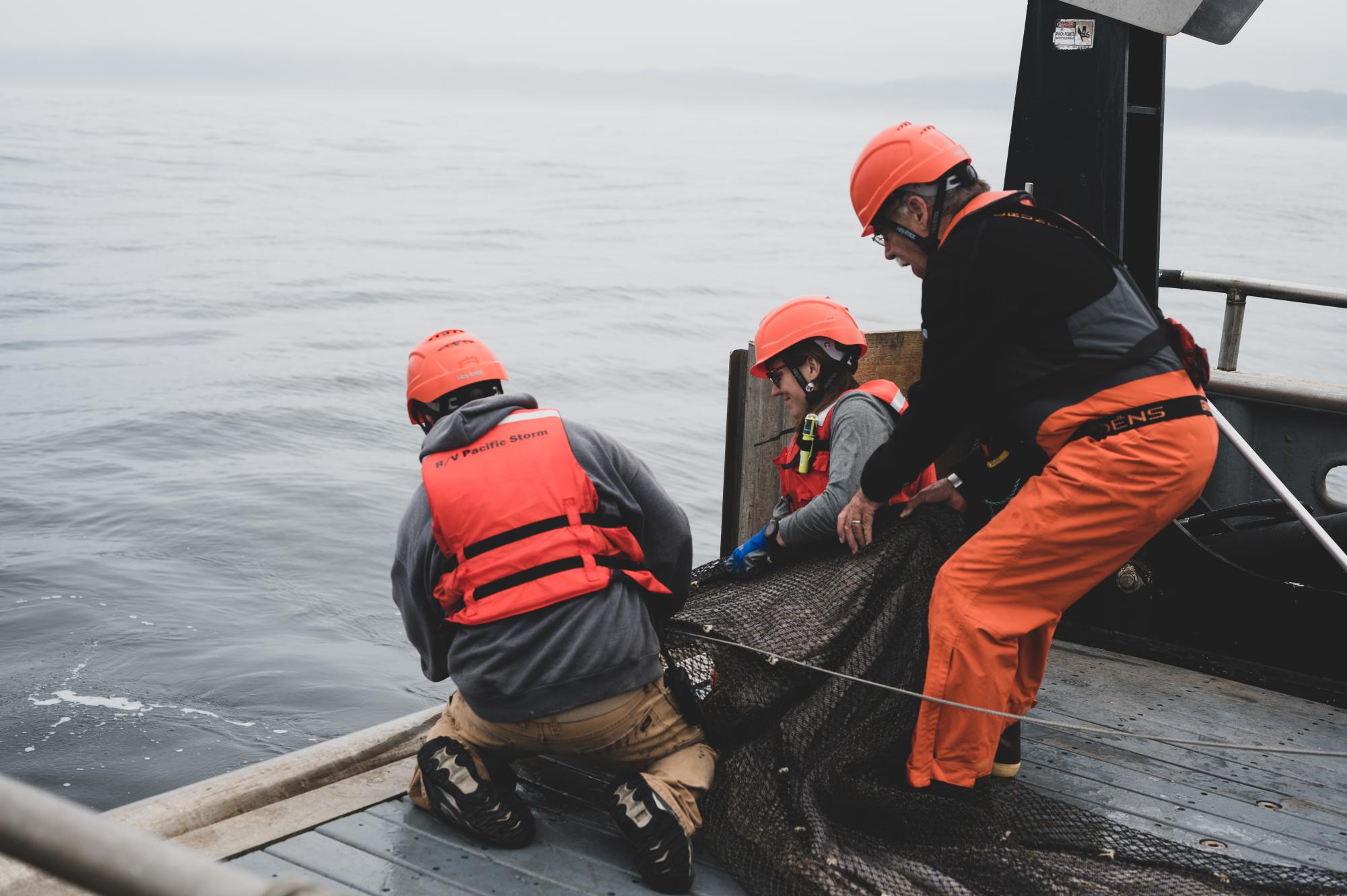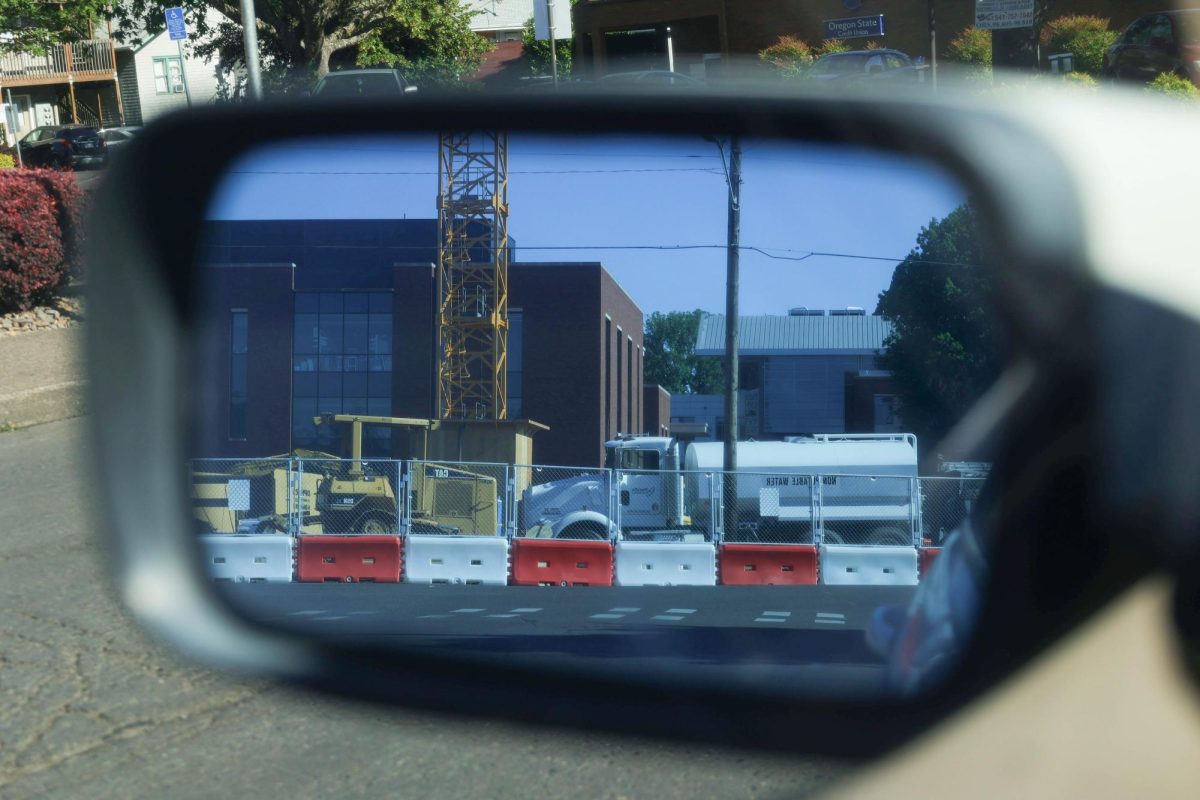Research vessels run by Oregon State University – the 54-foot Elakha, 84-foot Pacific Storm and, retired, 177-foot Oceanus – are soon to have a new vessel joining them at the Hatfield Marine Science Center.
The research vessel, or R/V, Taani is a part of one of three new ships to be run by OSU in a partnership funded by the United States National Science Foundation to study ocean conditions and its impact on marine environments.
Even with the expectation of a new vessel in the shipyard, the veteran vessels have their own accolades, relevance and resources that are not to be forgotten about.
According to Andrew Woogen, marine technician superintendent, all the vessels serve the projects and missions of scientists across various disciplines.
“Each mission is completely unique,” Woogen said. “It’s the scientists who will be funded for their work and then using our platforms to access the ocean.”
Integrative biology Ph.D. candidate at OSU Elena Conser is one of these scientists who has been able to do research with OSU’s operated vessels for the past two years.
Conser’s research involved both the R/V Pacific Storm and R/V Elakha in collecting juvenile English sole fish in the shallow, nearshore coastal waters of a bay adjacent to the Hatfield Marine Science Center in Newport.
“I am able to collect samples for my own research questions independently without having to ‘piggy back’ on others research cruises,” Conser said in an email. “Additionally, I have been able to take undergraduate volunteers with me, also providing experiences for them to see hands on what ocean-going research looks like, although on a small scale.”
Conser is hopeful that some of the other research her lab has been working on using non-OSU operated vessels could be undertaken directly to an OSU vessel when R/V Tanni arrives.
Even with the new vessel’s soon-to-be arrival, and the retirement of R/V Oceanus, the other ships are trucking along and continue to provide opportunities for researchers like Conser.
The R/V Elakha is the smallest vessel operated by OSU, primarily used for day trips near the coast. The vessel was named after the Chinook trading language for sea otters.
The ship was built in 2001 in Mt. Vernon, Washington before being sent down and stationed in Newport, OR where it became one of OSU’s research vessels.
The vessel holds a water sampling system, small lab and small gallery which is typically used for smaller offshore projects; such as deploying unmanned underwater vehicles and retrieving buoys no more than 30 nautical miles – roughly 34.5 miles – from Newport.
Larger than the R/V Elakha, but smaller than the retired R/V Oceanus and incoming R/V Taani, the R/V Pacific Storm vessel provides space for overnight expeditions up to 30 days long.
The R/V Pacific Storm, which was once a commercial fishing vessel, was gifted to the university and Marine Mammal Institute from Scotty and Janet Hockema. The vessel has been on more than 54 cruises primarily for whale and marine mammal studies.
The ship even has its own claim to fame, having been a part of “Kingdom of the Blue Whale,” a 2009 National Geographic documentary.
Newport’s most recently retired OSU research vessel – R/V Oceanus – had numerous excursions of its own before coming to OSU in 2012.
Before 2012, the R/V Oceanus was stationed in Woods Hole Oceanographic Institution and owned by the National Science Foundation. The vessel was not only used for research but built for the purpose of research.
“A lot of times they’ll reconvert a Navy ship or a fishing ship for science, but these three (Oceanus being one of three made with the same intention) were built specifically for ocean science,” Woogen said. “(It) is kind of cool because that’s what they’re also doing with the Taani.”
The R/V Taani is being built as the first of three Regional Class Research Vessels with funding from the National Science Foundation. The vessel will find a home with OSU while the other two sister ships will go to Rhode Island and the Gulf of Mexico.
According to Woogen, over the course of his career vessels have gone from some internet access onboard to “floating supercomputers,” which now is a necessity for research at sea.
“They’re pushing for data presence, which will basically be real time data transmitted to shore from the ships,” Woogen said. “So that’s something unique with these ships and I suspect we’ll see that on all ships here in the not too distant future. So folks can be in a classroom on shore and see what data’s coming through at sea.”
Although the R/V Taani’s specific completion and arrival date are not public knowledge yet, Woogen said that he and his team are in the process of preparing for its arrival sometime in 2024 and excited to see what the ships new technology brings.
According to information released from OSU in May 2023, the vessel will begin its first expedition sometime in 2025.















































































































